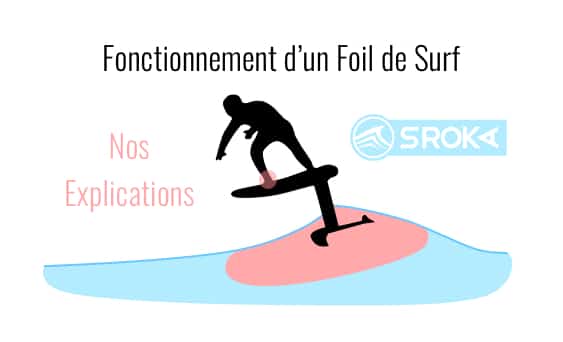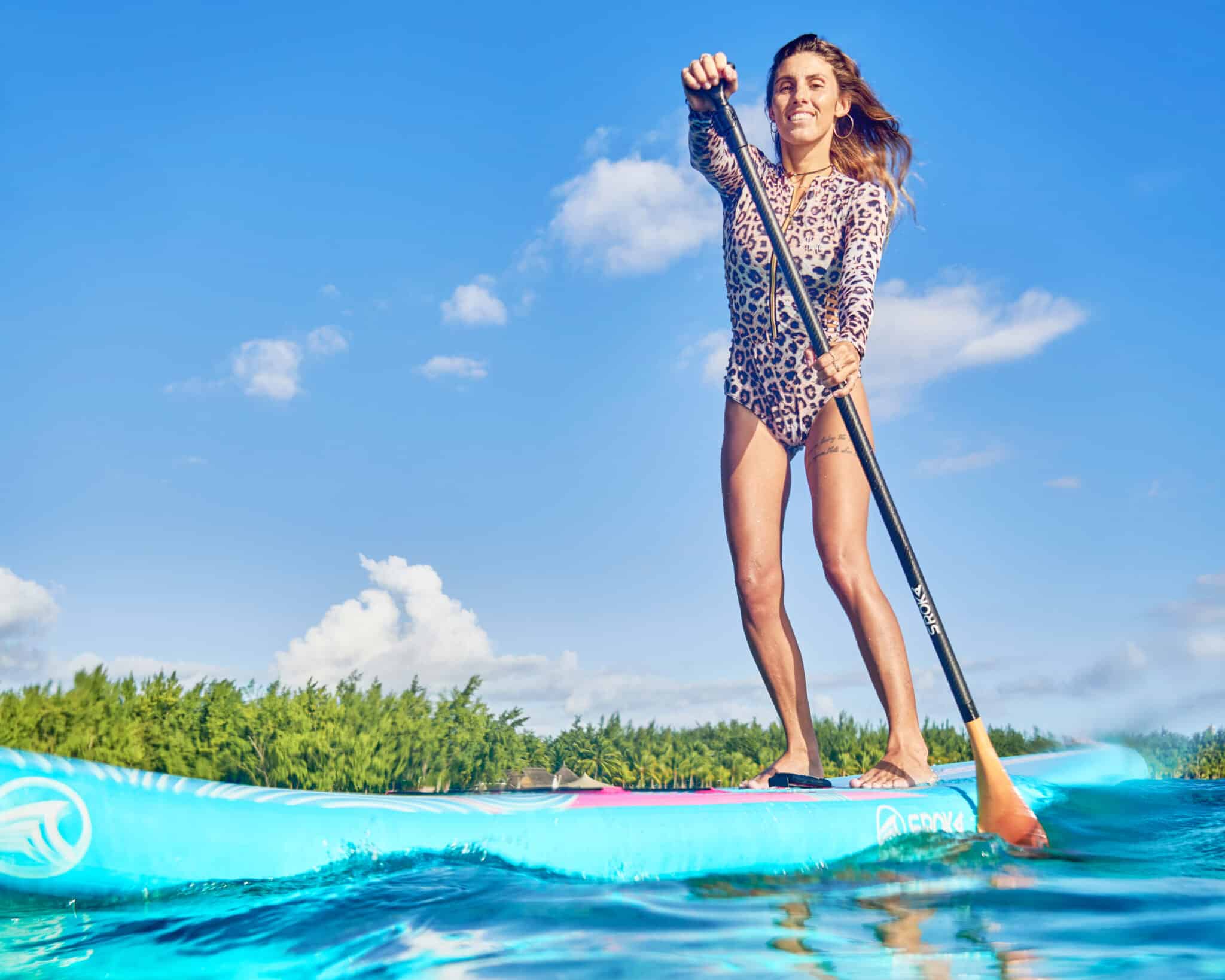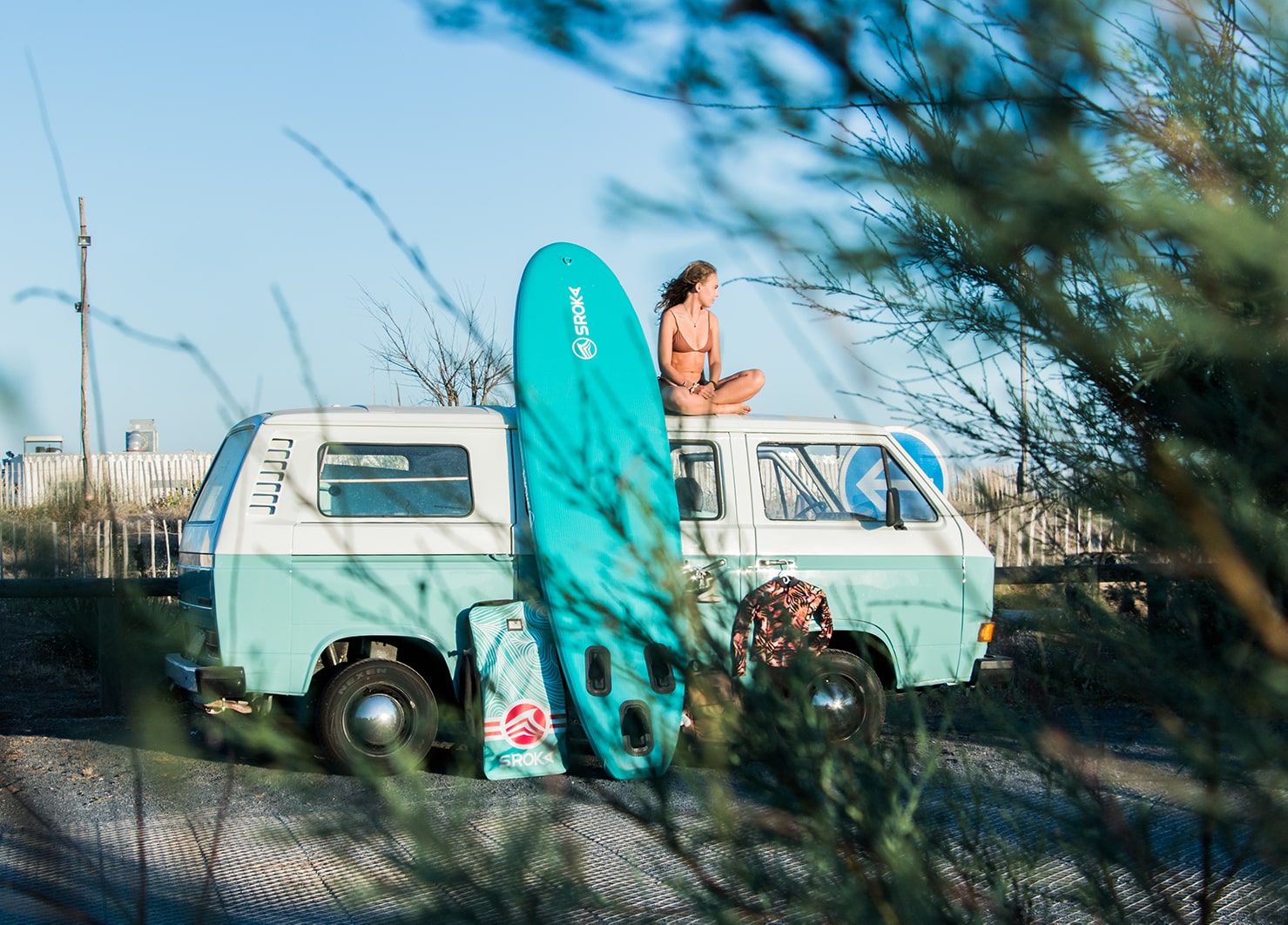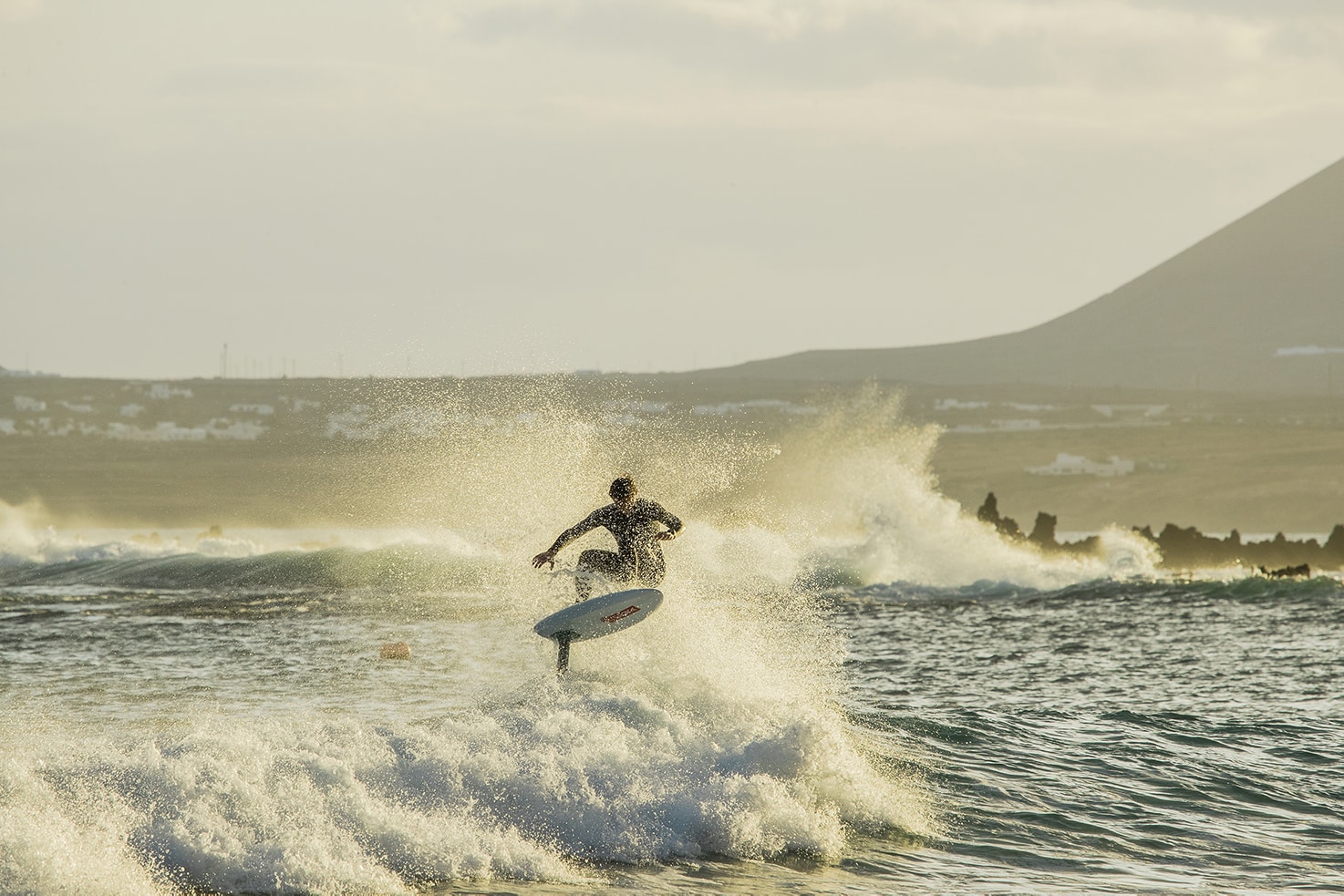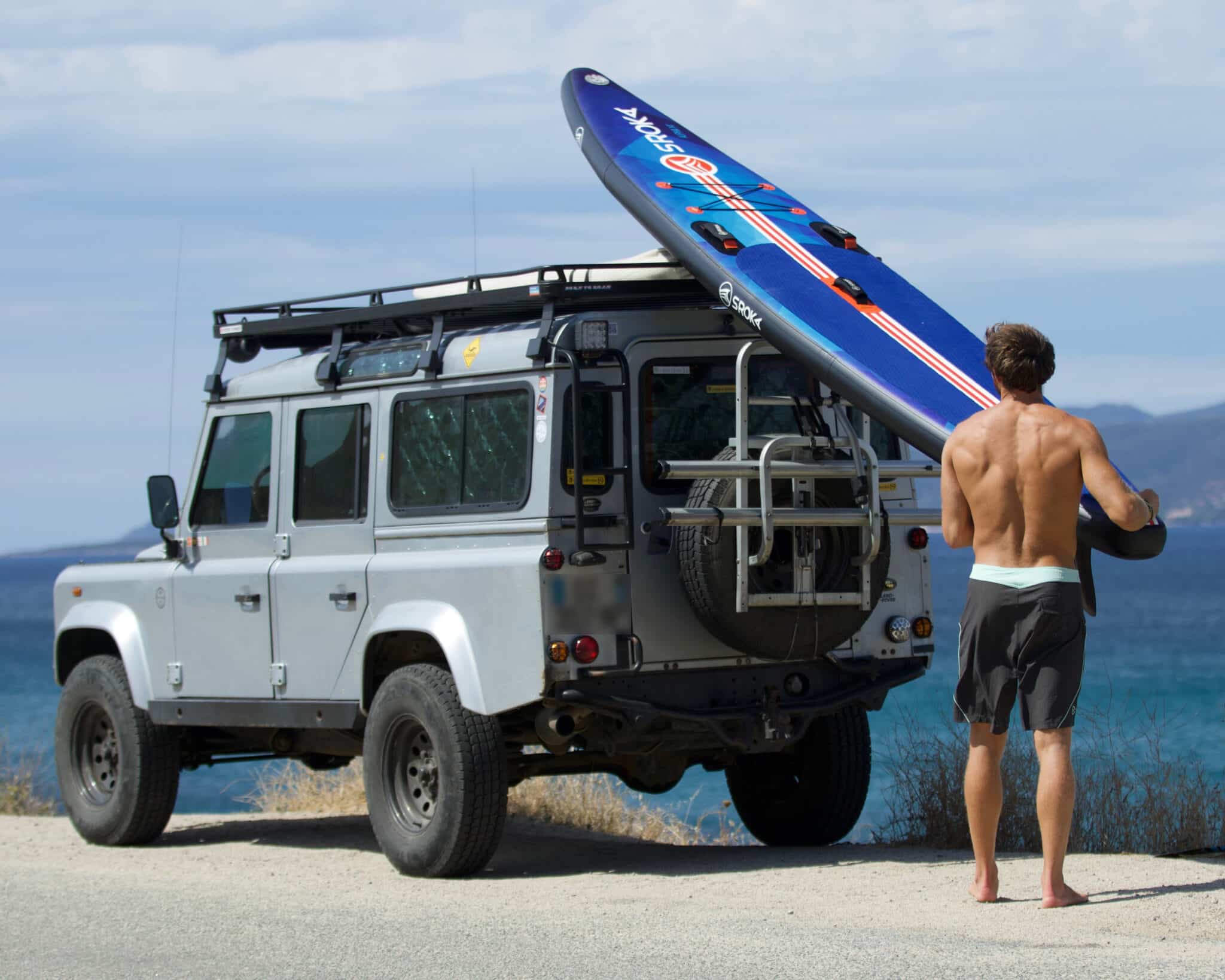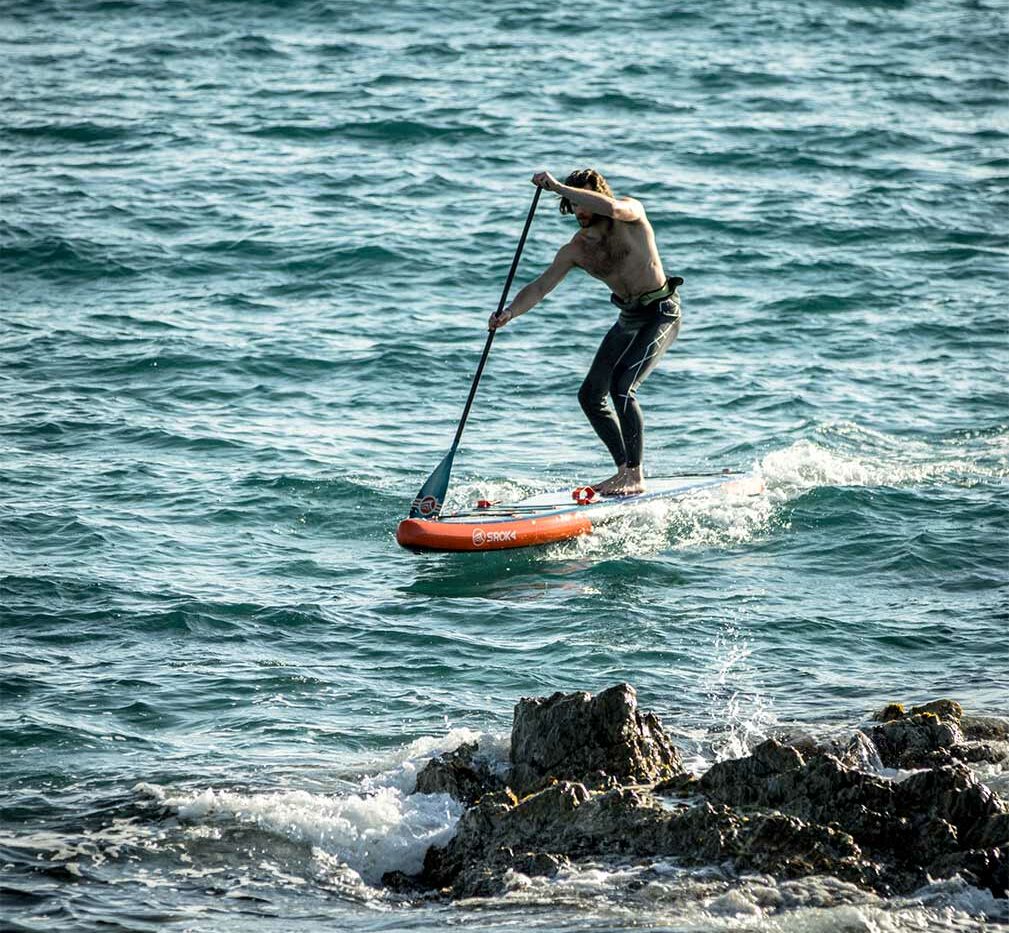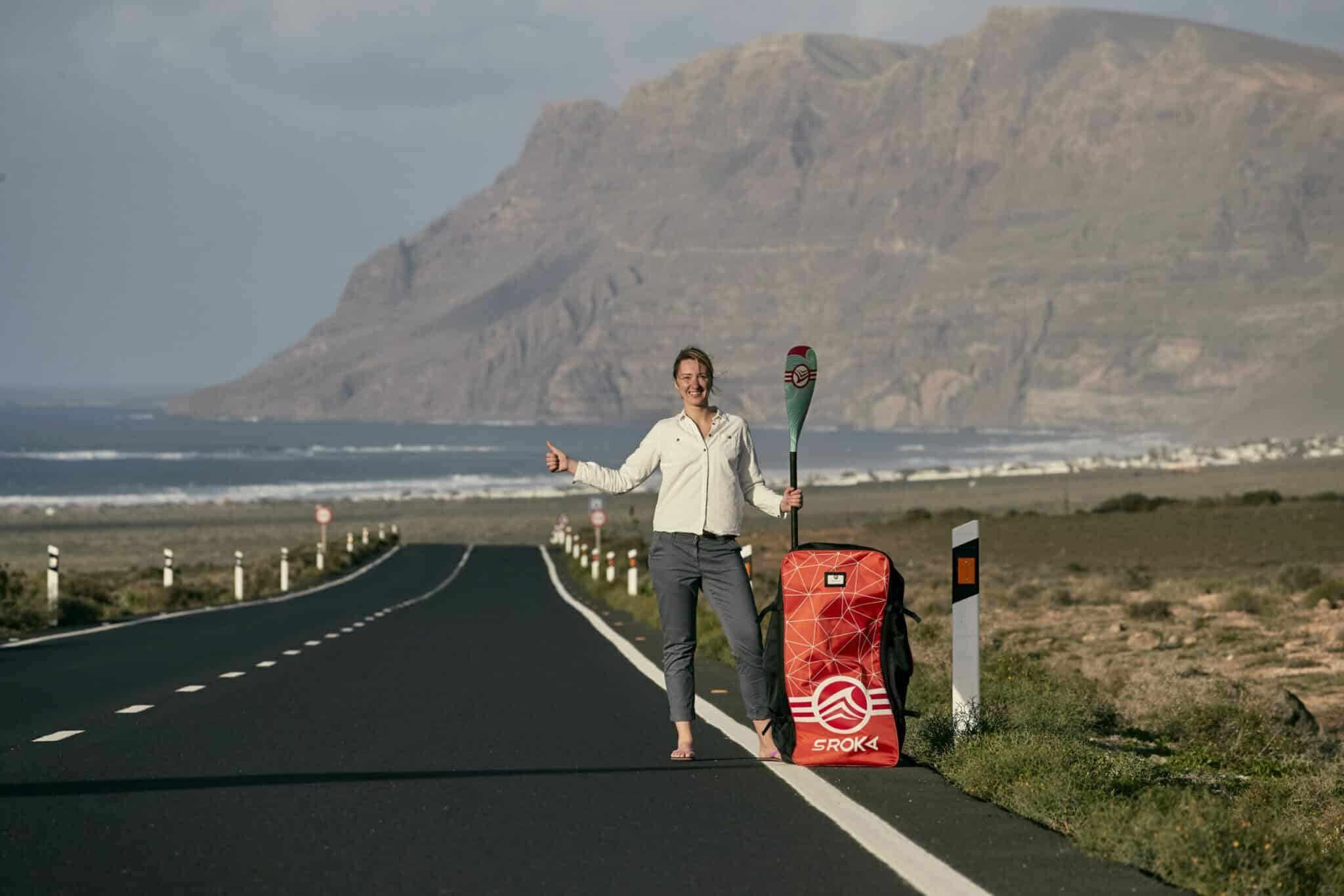 LE MAGAZINE
LE MAGAZINE3 tips for winging your way upwind foil

3 tips for winging your way upwind foil
Wing foil, a discipline that has grown significantly in popularity since 2019, needs no introduction. This rapid development is testimony to the growing popularity of wingfoil and its significant impact on the world of water sports. Knowing how to get upwind in a wing foil is one of the most important criteria for autonomy. It’s the key to becoming autonomous in your flying. So let’s take a look at the essential steps and pre-requisites that will enable you to climb upwind. Follow our advice on how to go upwind if you want to progress rapidly in wing foil. You’ll gain in safety and autonomy.
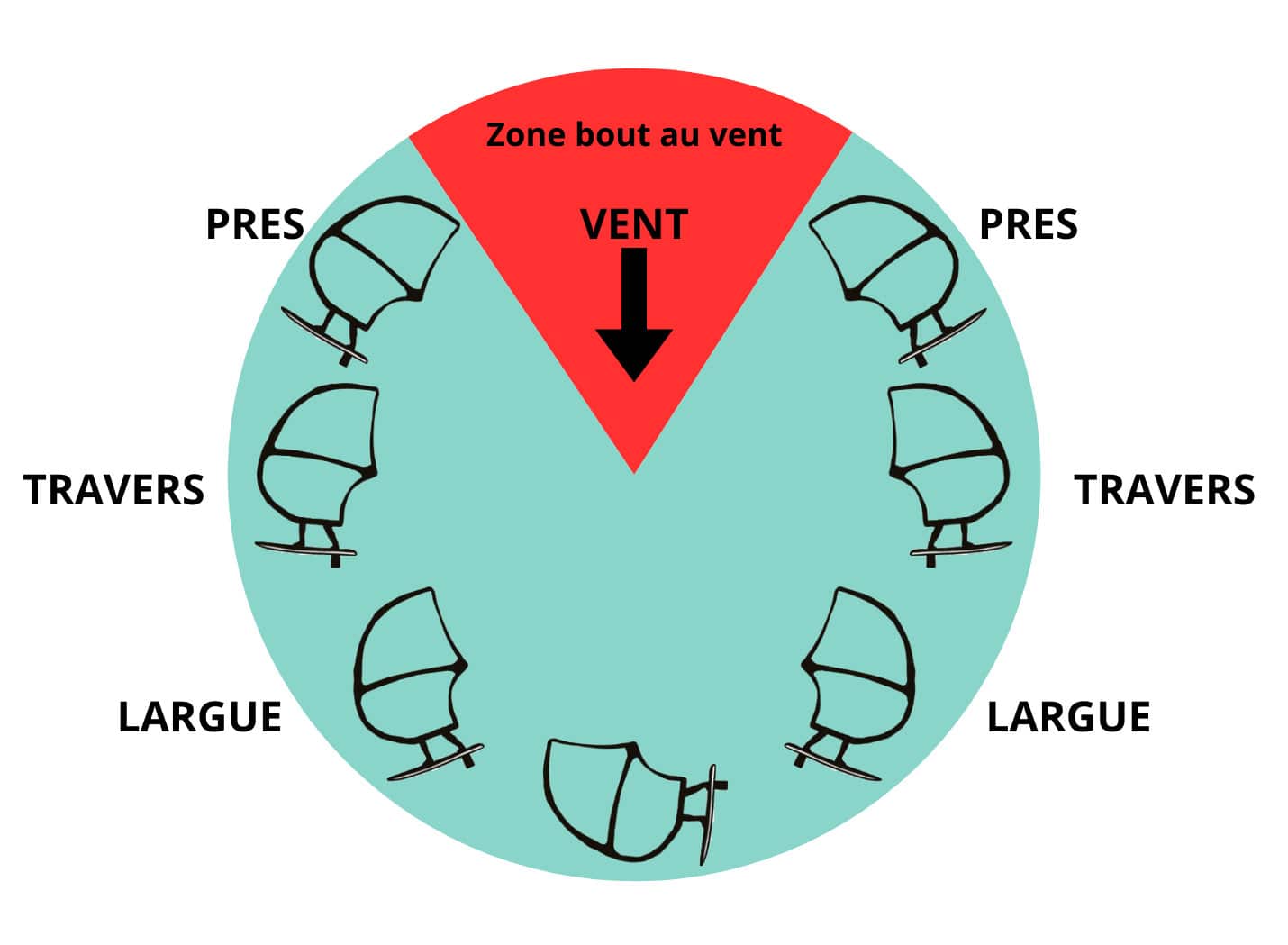
Understand the basics of wing foil and upwind riding
In sailing, no boat is capable of going upwind, yet the wind continually pushes us in its direction. To compensate for this, our predecessors found a way to sail upwind. The principle is quite simple: you “gain ground” as you tack, little by little. You zigzag against the wind. It’s like climbing a mountain in a straight line: you have to “zig zag”. Riding upwind allows you to move all over the water and be totally autonomous on the spot.
Up close
In sailing, we call our directions points of sail, and upwind is one of them. This is the point of sail that will enable us to sail upwind; it lies between the crossing and the windward end. Its limit is therefore the perpendicular to the wind on one side and the stop of the boat on the other (marked by the red zone in the table below).
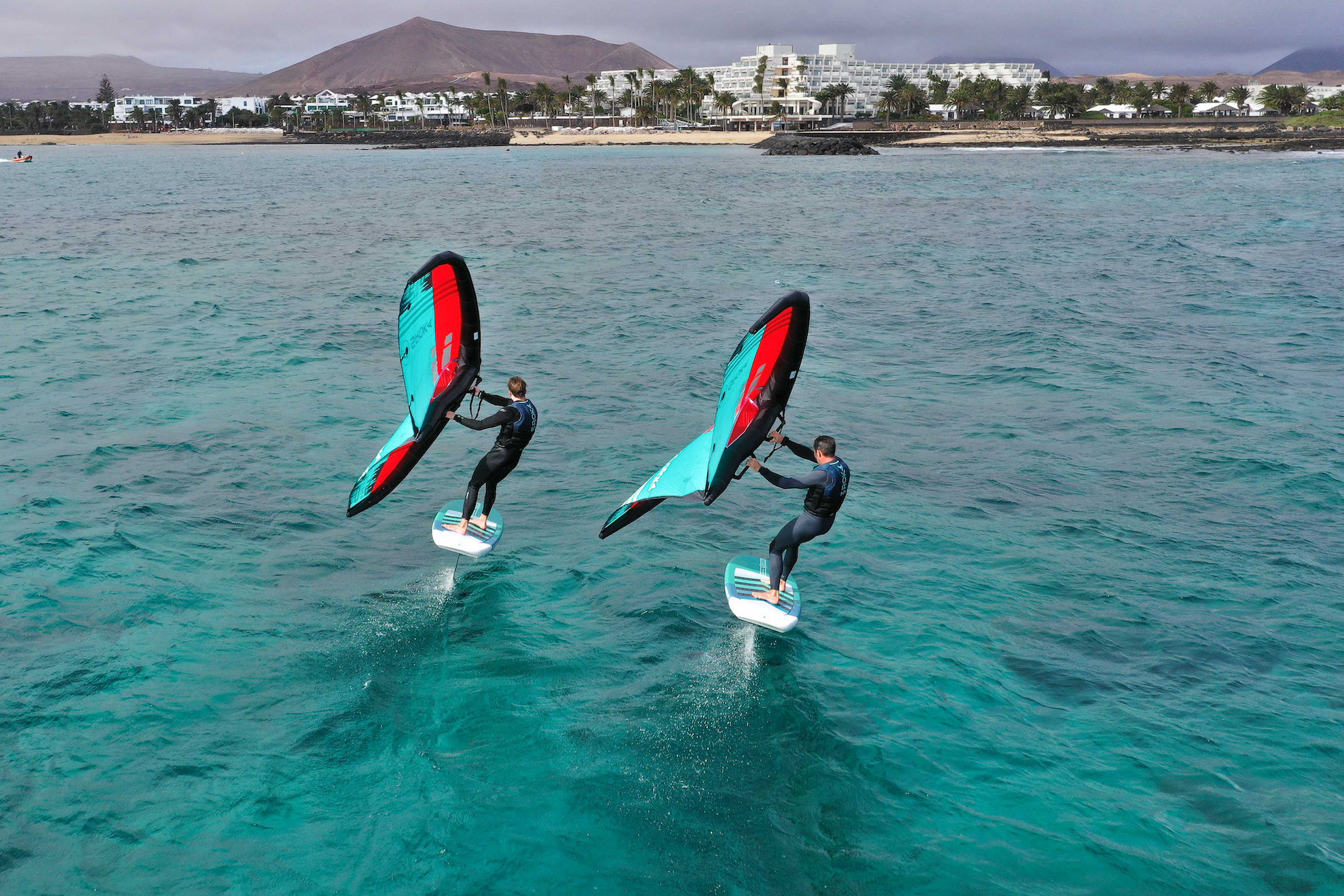
Position and balance
To go upwind, you’ll need to put the foil in a particular position (the counter-keel, i.e. the board should be leaning into the wind, mainly by pressing on the heels). The aim is to tilt the board slightly into the wind (nose slightly into the wind) by pressing on the heels. For a comfortable edge, you need to find yourself in a kind of balance: the wing pulls you (downwind), the foil pushes you. You need to feel that exact point where the balance is perfect, where you are in control of the situation and your trajectory.
The position on the board varies from rider to rider, with some preferring to have their rear foot off the strap, while others prefer to keep it on, as you wish. The most important thing is to feel relaxed, because the more relaxed you are, the faster you’ll be able to accelerate to make your heading efficient. Slightly bending your legs will give you greater control of your foil through better management and responsiveness of your support. Put yourself in a position where you can press lightly on your heels to tilt the board comfortably. Keep this in mind when you’re sailing (by off-centering the centre of gravity, you’ll have more counterweight and therefore be able to transmit more power to the foil to bring the foil upwind). The wing is positioned slightly lower than normal, (almost in front of you), allowing you to develop a stronger horizontal force. Be careful, however, not to touch the water with the ear of your wing, or you’ll be saying hello to the fish. Depending on the wings you use and their profile, you’ll need to tuck your wing in more or less, i.e. pull on the back hand. Find the point where your wing develops the most power! (Try pulling a little less or a little more).
Testimonial (Jules Bustin, sailing instructor): “The most frequent error I observe is body position. Riders let their shoulders go forward with the wing. You have to straighten up, your shoulders almost have to go slightly backwards to contain the pull of the wing. So straighten up and be proud (shoulders back, pecs forward).”
Upwind angle :
The concept of VMG (Velocity Made Good):
In simple terms, VMG is the compromise between CAP, i.e. the angle of your upwind climb, and speed. It expresses the efficiency of our upwind ascent in relation to a target.
To keep things simple, if we sail close to the wind (as close as possible to the windward side), our speed will be very low, but the distance we have to cover will be less. Conversely, if we’re sailing almost abeam of the wind, our speed will be high, but so will the distance we’ll have to cover to reach the same point. VMG is the best compromise between these two extremes.
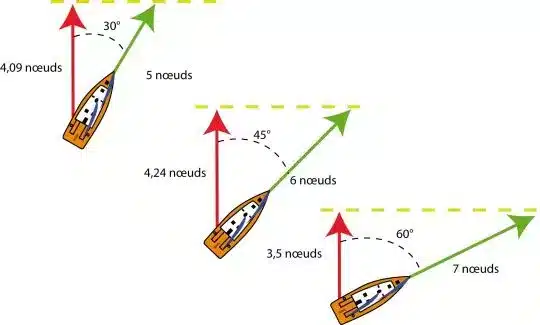
The notion of adonnante and refusante :
These are the wind variations mentioned above. An “adonnante” is when the wind turns in your favor, allowing you to gain even more ground. A refusing wind is the opposite, when the wind turns against you. In regattas, it’s said that you should always tack when you’re hit by a refusante, and take advantage when you encounter an adonnante.
These effects can be due to coasting, clouds or a change in the wind direction. So knowing the effects of hills is fundamental to optimizing upwind sailing.
Upwind techniques
Going upwind is a lot like zigzagging on the water, or at least that’s how it’s presented when we try to explain it to children. The real term is louvoyer. We commonly use the expression “tacking”. This means making the widest possible round trips on the water, heading into the wind.
Pumping can help you gain a few degrees and maintain your speed (often used in competition). There are two distinct pumping techniques: wing pumping and foil pumping. Pumping the wing must be done with both arms simultaneously, and resembles a waterfall pumping action you might perform on a windsurfer. The elasticity of the shoulders is used to generate power. The pumping of the foil is done by the propulsive variation of the flying height, which means that you press alternately on the front and back leg to make the foil oscillate and accelerate the board. In any case, it takes time to learn all the techniques and maneuvers specific to our sports (wing, kite…), especially those at foil. So be patient and get in the water when conditions allow and when you feel like it.

Understanding the basics of wingfoil and upwind climbing
There are two possible scenarios when sailing:
- or sail in harness,
- or without harness.
In both cases, body position is essential.
- On the harness, you flex your legs a little more, so as to press as hard as possible on the foil, but not only that. Observe the position of the foilers, they all have their buttocks back, their center of gravity is away from their board and the vertical of their foil, this allows them to get a better grip on the water.
- Without a harness, the pull of the wing will eventually tire you out, and bending your legs will generate a lot of traction in your hands. That’s why, without a harness, you’ll try to sail with more finesse by straightening up (aligning feet, pelvis and shoulders).
Progressing upwind
To progress, you have to practice! Although it may seem obvious, too many riders are content to stay in one place during their sessions. Don’t fall into this trap, go exploring, go up, go down… Get out of your comfort zone to confront yourself with a multitude of varied situations that will enable you to progress. For more online tutorials, YouTube is an exemplary database with content in both English and French. Among the channels offering their services, SROKA’s “Sroka company” is highly recommended.
In conclusion, going upwind in a wingfoil is not a matter of magic or extraordinary ability, it’s more a question of reflection than technique. Whatever your background in board sports, any rider can go upwind. Sometimes it’s just a question of time and determination.
To make the most of your progress, you can analyze your trajectories with a gps or a phone, but we also advise you to progress with others. There’s nothing like being able to compare yourself with a buddy on the water and trying to be better than him. Emulation makes for faster progress on the water.
 Le Magazine
Le Magazine



